5 min read
Share this post

Our four part order of adjectives series can be found in our Teacher tab, filed under our Adjectives and Adverbs category. These lesson are available to ESL teachers that have set up an account for our private beta on our Home Page. The following is a break down of the target language you can expect to find in our series:
A2.1 – Adjectives-Order – 1
In our first lesson we introduce the structure of adjectives being placed before nouns. We also illustrate, that unlike nouns, adjectives have no singular or plural form. We provide ample opportunity for your students to practice the adjective order, by using gapfills (with pictures) and sentence correction. We also provide freer practice where the student creates their own sentences, prompted by pictures of adjectives and nouns:
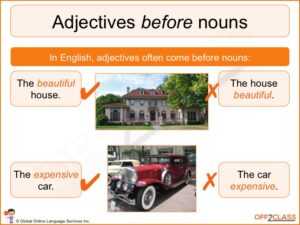
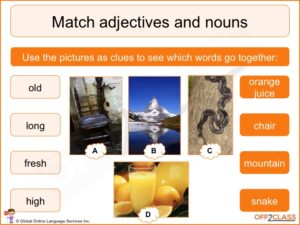
A2.2 – Adjectives-Order – 2
In the second lesson of our order of adjectives series we introduce placing adjectives after verbs. We start with adjectives coming after the verb to be (e.g. he is tired) and other sensory verbs such as look, feel, smell, taste, sound (e.g. that sounds terrible). We practice placing adjectives after verbs in both positive and negative sentences. We then make special mention of the verb feel + adjective to express emotion (e.g. I feel upset / they feel sad):
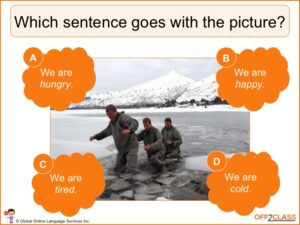
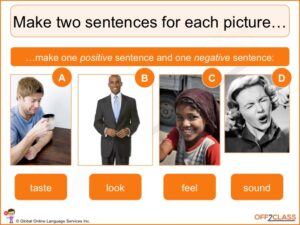
A2.3 – Adjectives-Order – 3
In the third lesson plan in our order of adjectives series we introduce the concept of using multiple adjectives in sentences. We begin with outlining the difference between a fact adjective (e.g. a glass table) and an opinion adjective (e.g. a beautiful table) and establish that the opinion adjective usually comes before the fact adjective (e.g. a beautiful glass table). We then introduce the order of fact adjectives in sentences when multiple fact adjectives are present:
(e.g. a large new Italian leather chair).
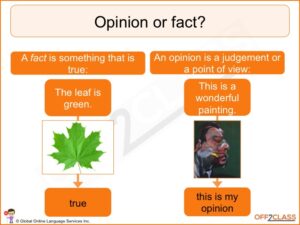
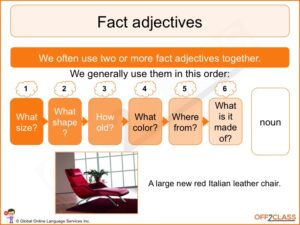
A2.4 – Adjectives-Order – 4
In the final lesson in our order of adjectives lesson plan we provide further practice of opinion vs. fact adjectives and the order of multiple fact adjectives in sentences. We then introduce the use of adjectives after get and become to express change (e.g. I get hungry, she becomes hungry). We provide significant freer practice for the student to practice the concept of changes, by describing changing states represented by pictures:
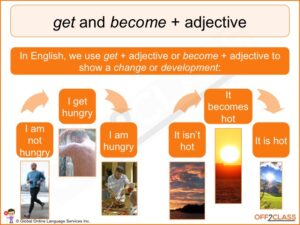
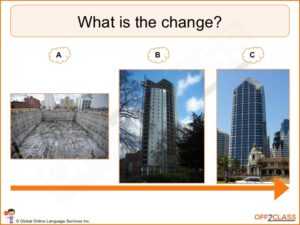
We then provide a review of all the order of adjectives principles that have been built upon throughout the four part series.
Share this post
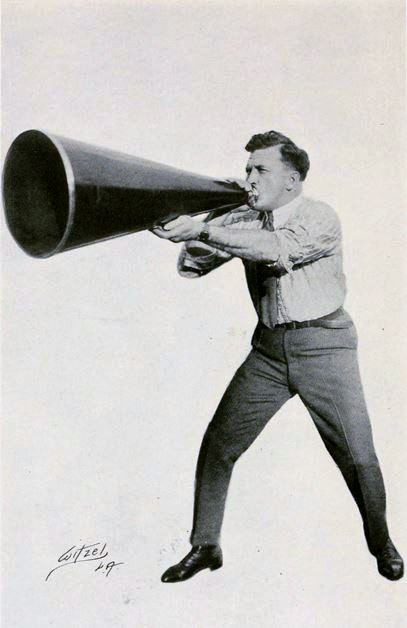


Leave a Reply